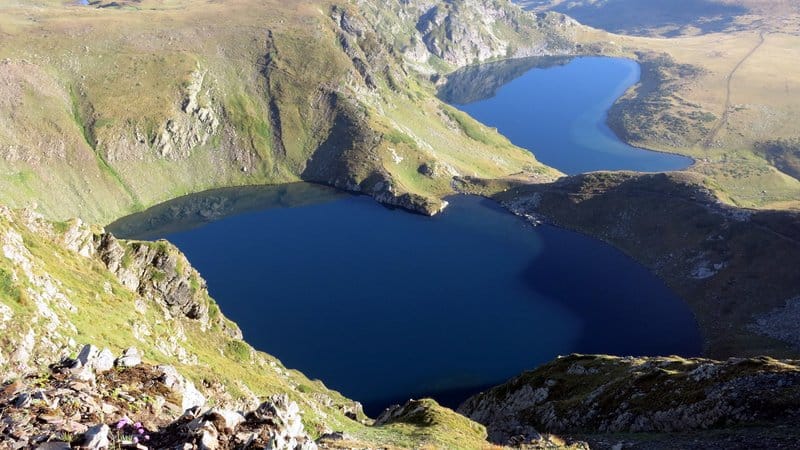The 5-day Rila Traverse
€145.00
Musala peak – The Seven Rila Lakes – Ivan Vazov Hut – Malyovitsa peak and hut – The Rila Monastery. Navigation tools and planing support included. Please add your dates to the Order Notes at Checkout.
A five-day hiking tour from a hut to another – except for the first night after Musala, when accommodation is at the foot of the Rila Lakes. Visit of the main highlights of the Rila National Park – the highest peak of Rila – Mount Musala, the UNESCO site Rila Monastery, the beautiful Seven Rila Lakes and the Malyovitsa peak and valley. The route is well balanced between popular and less popular tracks which allows to see the famous sights and still enjoy the tranquility of the massive Rila range, crossing the mountains on foot from north to south.
The 5-day Rila Traverse
The route is achieveable for experienced hikers in good form, with basic experience in navigation and with the proper equipment. The accommodation is up the mountains, in private rooms with private or shared facilities, the only exception is Malyovitsa Hut where only shared dorms are available.
NAVIGATION – all the navigation tools you need to plan and complete this route independently. We provide:
- Paper map of the route – can send them abroad or to your hotel in Sofia: Map of Rila Mountains
- Route gpx tracks;
- Route notes with important info on the route and general advice;
- Assistance in using your navigation tools such as smartphone apps, gps unit, installing the tracks, etc.
CONSULTATION – 1×30 min with us before your tour. We will answer all your questions and address any doubts, also help you in the preparation, planning or research.
ROUTE ADJUSTMENTS – We will adjust the plan and the route within the same timeframe for you, according to your personal travel plans and preferences on the difficulty of the day walks, the accommodation type, etc.
Not included
- Guiding;
- 24h emergency support during the trip;
- GPS unit;
- Transport, accommodation or food expenses;
- Luggage transfers, lift tickets;
- Insurance.
Day 1
2925m 6:30h
Sofia
Borovets
Mount Musala
Sapareva Banya
Day 2
2600m 8:30h
Sapareva Banya
Zeleni Preslap
Skakavitsa Waterfall
The Seven Rila Lakes
Vazov Hut
Day 3
2729m 7:30h
Vazov Hut
Malyovitsa Peak
Malyovitsa Hut
Malyovitsa Ski Area
Day 4
2500m 8:30h
Malyovitsa Hut
The Scary Lake
Kobilino Branishte
The Dry Lake
Kirilova Polyana locality
Day 5
2:30h
Kirilova Polyana
Ivan Rilski`s Grave
The Rila Monastery
Contact Us
Contact us if you have any additional questions. If you would like to purchase this tour package for 1 or 8+ people, please speak to us or fill out our form and we wll prepare a custom quote for you.
ENQUIRE NOW€125.00


€205.00
































